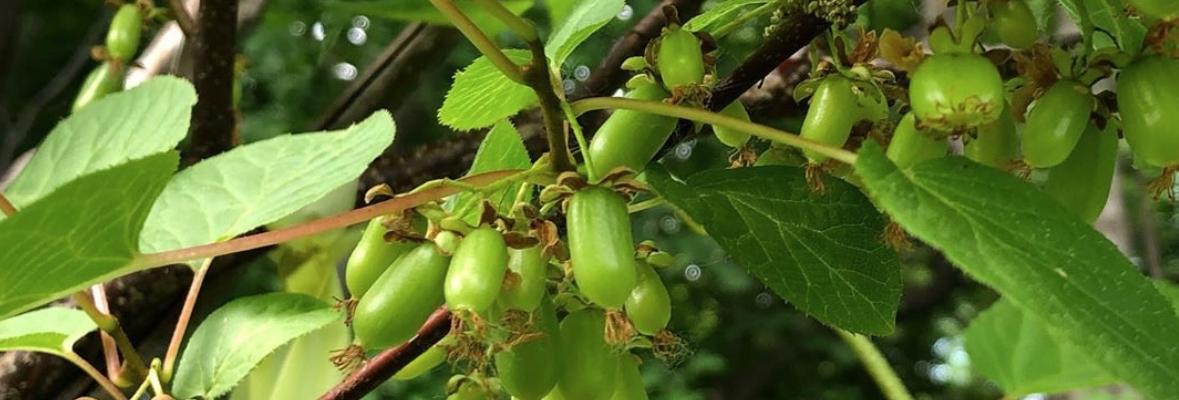Quite unintentionally, I came upon a lengthy discussion based on a couple of blog posts by Sue Reed: http://nativeplantwildlifegarden.com/permacultures-internal-contradiction/ and http://nativeplantwildlifegarden.com/invasive-plants-in-permaculture. The comment sections on these two posts are, not surprisingly, very long with some quite determined language. However, it is a great opportunity to get a lot of resources to study ecology and how plants interact with each other and other organisms. I heartily encourage everyone to read at least some of the comments. Eric Toensmeier and Toby Hemenway even pitched in to share their views. The main back-and-forth is about the use of invasive plant species, specifically within the philosophy of permaculture.
Much of the disagreement came down to the need for, and the total inability to truly have, a specific definition of the term invasive species. Coming up with a definition is so difficult because there are so many variables. And the time length needed to be able to understand all of the effects of plant immigration is, at the very least, in the thousands of years range. Do native species ever count as invasive? Is a plant invasive if it is filling a niche or providing a necessary role?
There are many other questions besides these. In general, the answer to whether a specific species is invasive and if that is a bad thing when viewed from the ecological long-term perspective seems to depend upon which question a person gets hung up on, so to speak, and determines for himself what the line is that everyone else should not cross. And since that is an individual decision, it makes it really hard for there to be a general consensus on what to do and where to stop.
Okay, to sum up, a so-called invasive species will begin arriving in a new area and begin to spread. Over time, typically a few years or less, this new species will begin to displace or kill off a so-called native species, meaning a species that existed in that region for an arbitrary length of time prior to the arrival of the "invasive" species. Sue Reed's question was this: why would permaculturists intentionally plant a known invasive species since that species causes harm to the native ecological balance?
My first thought was that I needed to find out which plants are considered invasive in my area. I could not find a list of invasive plants. There is a USDA-sponsored list of noxious weeds. But noxious weeds are not necessarily invasive plants. The Early Detection and Distribution Mapping System has a list of reportedly invasive plants that are found in Utah County. But even that list comes with a notice that the plants reported as problematic are not necessarily problematic in Utah County, just somewhere in the U.S. That makes the list somewhat less than helpful. So my search has not turned up anything other than the noxious weed list. I am sure that there are species in Utah County that many would call invasive, but I am not able to easily find a list. If you know of a reputable invasive plants list for Utah County, or even the whole state, please provide a link in the comments.
Warning: Blogger is now stepping onto his soap box.
Now, for my opinion on the matter. I mean, that is why you are reading this post in the first place, is it not? I have read about the issue from the standpoint of traditional conservationists and native plant enthusiasts. And I have read what well-known permaculturists Toby Hemenway
Maybe eventually the hardy kiwi of Massachusetts will become well integrated into that ecosystem. Maybe it will die out. We don't know. But, as long as we do not supply human needs from the lands already set aside for that purpose, then more and more land, including, eventually, that forest strewn with hardy kiwi, will continue to be stripped of both its natives and exotics, its natural state altogether, and will be turned into a factory farm or a monocultured, manicured forest.
I am now going to go check on my two hardy kiwis.
Thoughts? Let me know in the comments section.

My experience in the landscape field has lead me to believe that it is possible and even quite common to have invasive plants in an urban area with few remaining natives.
ReplyDeleteThe plants I refer to are plants that even permacuturists find hard not to weed out. I think this short list will be familiare to any city dweller that knows his plants:
Field bindweed
Siberian elm (sometimes incorrectly know as Chinese elm)
Tree of heaven
China berry
Dodder
Quack grass
While I know some who will sing the virtues of some of these plants, reality is if we are not careful with them they will take over the whole property and noting else useful will survive.